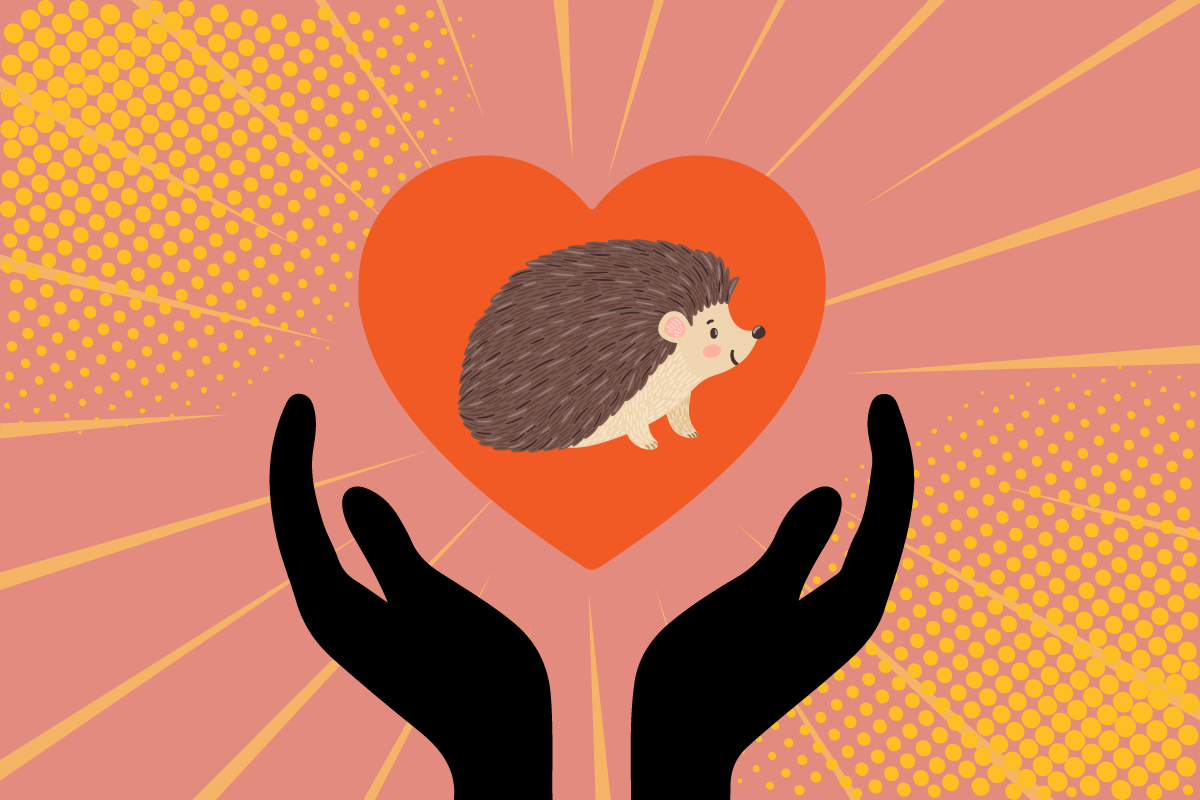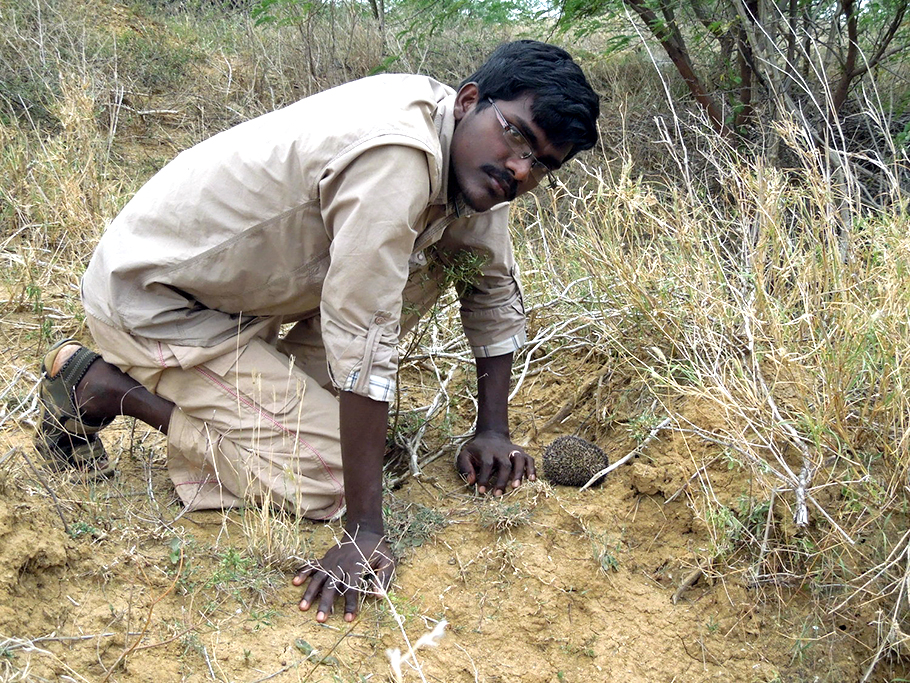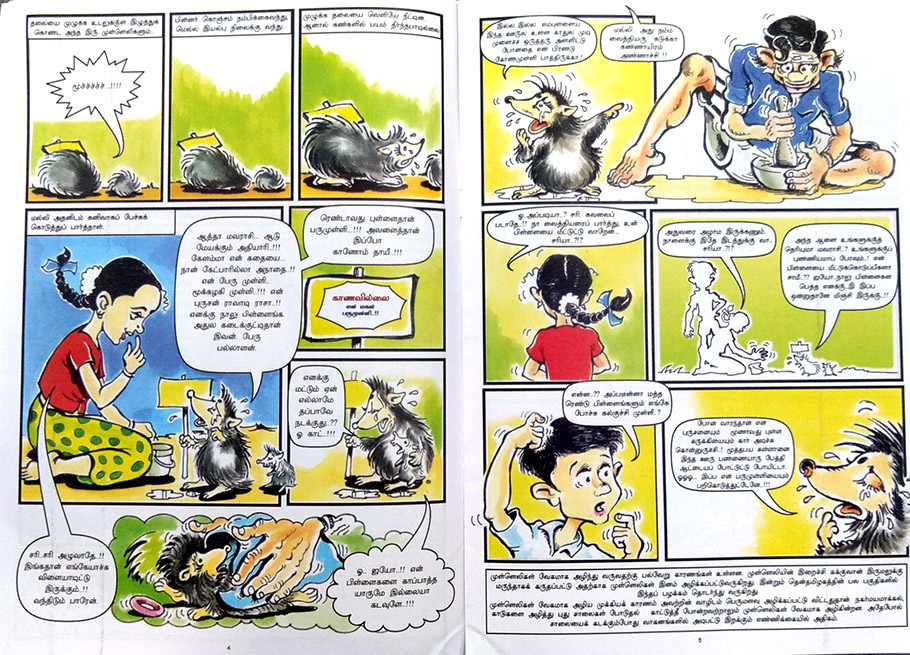
Researcher tells childhood tales through comics to save hedgehogs

A new comic is doing the rounds in schools in southern Tamil Nadu. Titled Mullikkaattu Ithigaasam (Legend of Thorny Land), it tells the tale of two schoolchildren saving a hedgehog from a quack and reuniting it with its mother.
Dr Brawin Kumar, who brought out the comic with the support of Inlaks Ravi Sankaran Fellowship, says it is an attempt to put the focus on the tiny pricky mammals, which need conservation efforts just like any other endangered bigger animal, but is neglected by the government and the scientific community.
“People often confuse hedgehog (mull eli in Tamil) with porcupine (mullam pandri),” says the PhD holder, who has done a study on rabbit species, Yarkand Hare, at the Institute of Zoology, Chinese Academy of Sciences.

“At first, it may resemble a porcupine. But a closer look will tell it is actually looks like a rat,” he says.
As many as 16 kinds of hedgehogs can be found in the world. Of these, three kinds are found in India. While Long-eared hedgehog (Hemiechinus collaris) and Indian hedgehog (Paraechinus micropus) can be found in the northern parts of the country, the Madras hedgehog or bare-bellied hedgehog (Paraechinus nudiventris) is endemic to southern parts of the country.
“The Madras hedgehog can be found mostly in the semi – arid regions of the state. It has large distributions in regions like Coimbatore, Salem, Namakkal, Tuticorin, Ramanathapuram, Thenkasi and Kanyakumari,” Kumar explains.
The hedgehog is primarily a nocturnal species. It is an insectivore, about 7-15 cm long. “That is actually the size of a coconut,” he says.
Its thorns are 2-3 cm long and resemble those of prosopis juliflora (mesquite or Karuvelam). Its reproduction capacity is low and during every reproduction cycle, it gives birth to 2-3 young ones and has an approximate lifespan of 5-6 years.
Although its medicinal properties have not been studied, traditional medicine practitioners use it for various purposes.
Also read: Administration of Nilavembu Kudineer for dengue stirs a debate
“Hedgehog meat is consumed as a delicacy and the oil extracted from the meat is used as a balm for joint paints. Its skin also has an economic value. In places like Dindigul, people used to sell hedgehogs alive for ₹500-₹600,” he says.
Kumar’s love for hedgehogs can be traced back to his school days in Ambasamudram, Tirunelveli district.
“Taking part in National Green Corps activities and doing environmental projects in school helped me learn the basics of the environment. My interest in zoology, made me pursue a career in conservation.”
“I choose to study about a species which is native to our land and that is how I landed on conserving Madras hedgehogs,” he says, adding that in the last four years, he has met thousands of villagers and learnt a lot about the animal.

“Most of the villagers I met were aware of the natural history of hedgehogs, particularly Narikkuravas (the gypsies),” he says, adding that research on hedgehog in India is in a sad state as compared to UK, US, France and China.
Besides rampant poaching and road-kills, rapid destruction of palm trees, around which hedgehogs are mostly found, as part of urbanisation, has reduced its count.
And the Indian Wildlife Protection Act has placed only Indian hedgehogs under Schedule IV, but others in Schedule V, rues Kumar.
This made him work towards the animal’s conservation. The comic Mullikkaattu Ithigaasam (Legend of Thorny Land) was a result of this.
“We have published thousand copies and distributed it to schools and voluntary organisations located within one kilometre radius of places where hedgehogs are often sighted,” he says, hoping elders will also get to know about it and play an important role in conserving hedgehogs.

